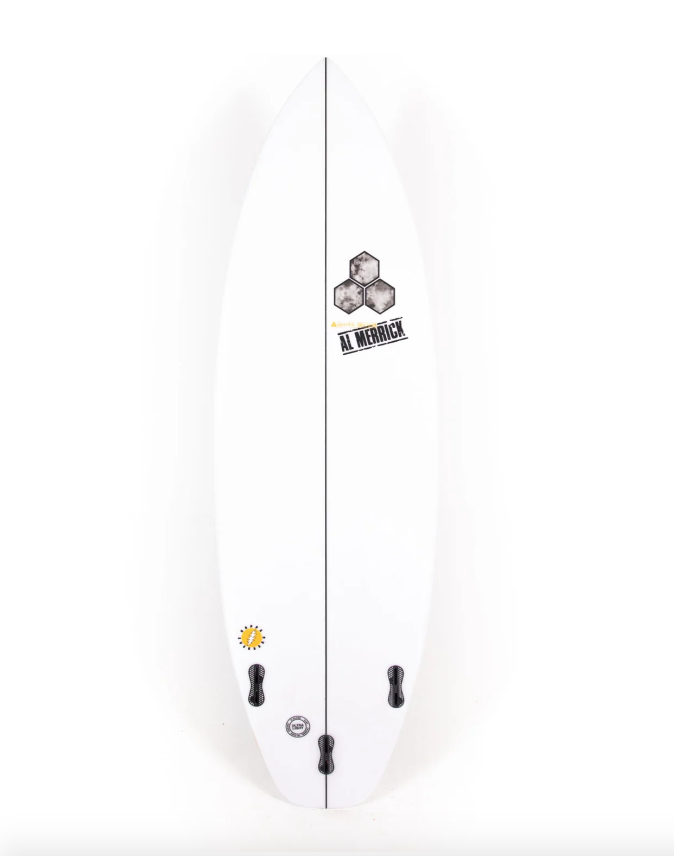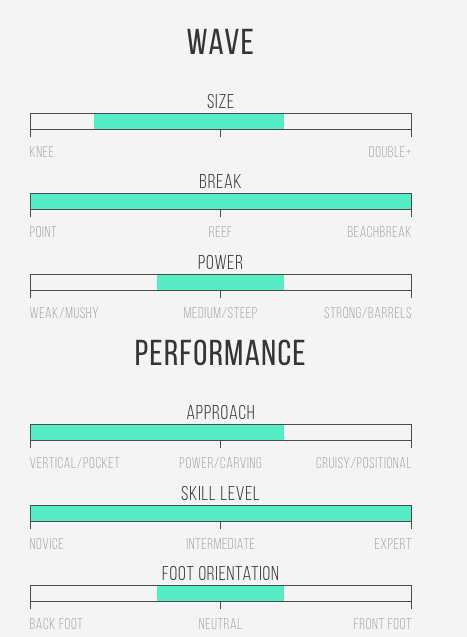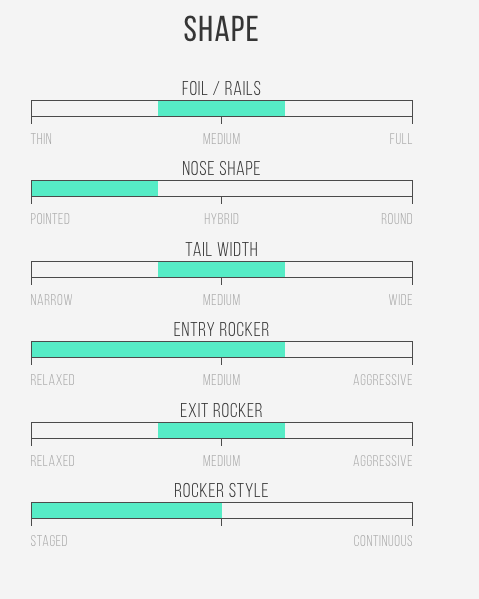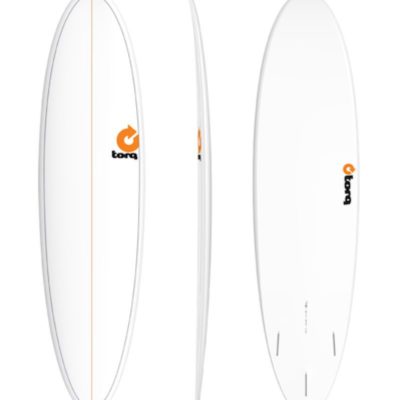Description
Created by Britt Merrick from what was initially the Two Happy performance shortboard model, our new Happy Everyday fills a need in every surfer’s quiver: the everyday shortboard. Coming off the heels of CI’s Pro Team loving the Two Happy, Britt wanted to draft off its performance attributes but modify it to address the everyday conditions most of us come up against. The kind of conditions where you want to rip and aren’t feeling the groveler vibes, and at the same time maybe not quite the epic stuff you would use your high performance shortboard for. To achieve this goal, Britt shortened the rail to create a curvier outline, especially through the tail area. For both the entry and exit rockers he lowered them to increase paddle and planing speeds to cover a broader range of conditions. The single concave under the front foot acts as a gas pedal and generous double concave through the fins provides rail-to-rail ease and plenty of lift in the small stuff.
The CI Pro Team has been loving it, and the design was further validated in the recent Stab in the Dark that featured Taj Burrow in West Oz—not only for the way it looked under his feet but the fact he chose to paddle out on as the wildcard for WSL’s Rottnest Islands event. The Happy Everyday is a great all-around design that sits right between your high performance shortboard (Two Happy) and a step down/groveler (Rocket Wide). In short, a board designed for high performance surfing on the majority of waves the majority of us surf every day, the Happy Everyday.
The kind of conditions where you want to rip and aren’t feeling the groveler vibes, and at the same time maybe not quite the epic stuff you would use your high performance shortboard for. To achieve this goal, Britt shortened the rail to create a curvier outline, especially through the tail area. For both the entry and exit rockers he lowered them to increase paddle and planing speeds to cover a broader range of conditions.
CI Happy Everyday Stock Dimensions See product photo’s
Brand
Channel Islands
Since 1969, Channel Islands Surfboards has been dedicated to performance and quality through hard work, innovation, and originality. Over the last 50 years, Channel Islands has grown from a local grass-roots operation to a cutting edge organization, catering to the best surfers in the world. It started with hard-core surfing and quality in mind and these guidelines have brought us through four decades of constant change in the surf industry. Channel Islands will shape the new millennium with innovative design and quality as our main focus.
“The driving force behind CI Surfboards is the demand on design created by the world’s greatest surfers, allowing for the highest performance surfing possible. To provide the most dedicated surfers with the most advanced, performance designs is my passion” - Al Merrick, Designer/Shaper
CI is a privately held organization focused on rider-driven product and manufacturing the best possible equipment available. Located in a state-of-the-art facility just blocks from Rincon Del Mar, the CI HQ represents a foundation for developing, testing, and building boards while providing jobs in Santa Barbara for many years to come.
Channel Islands Surfboards was created by Al and Terry Merrick in 1969. From his birth, Britt spent his days in the factory by the beach in Santa Barbara, from toddling around blanks to sweeping out shaping rooms. Eventually he started shaping alongside his father Al in 1990. He is now the lead shaper and designer for CI and carries on the family tradition of developing high performance board designs collaborating with the world’s greatest surfers. From Tom Curren, to Dane Reynolds, Channel Islands continues to evolve with the highest standard of surfing.

Heeft u hulp nodig bij uw aankoop? Neem dan gerust contact met ons op
+3170 201 5153
info@noordzeeboardstore.nl
Contact formulier








